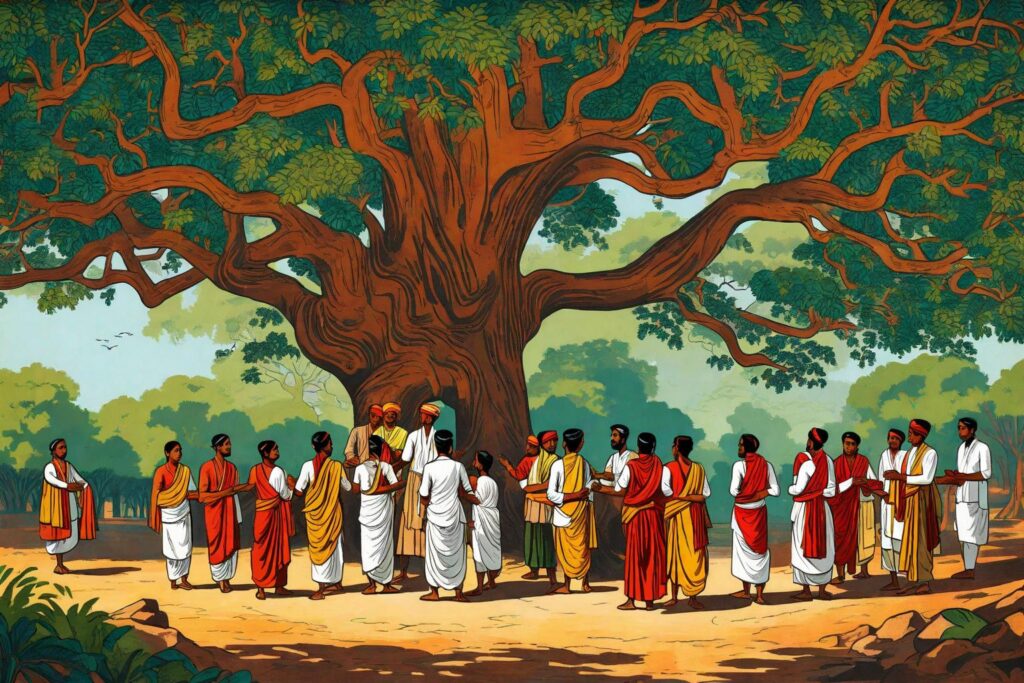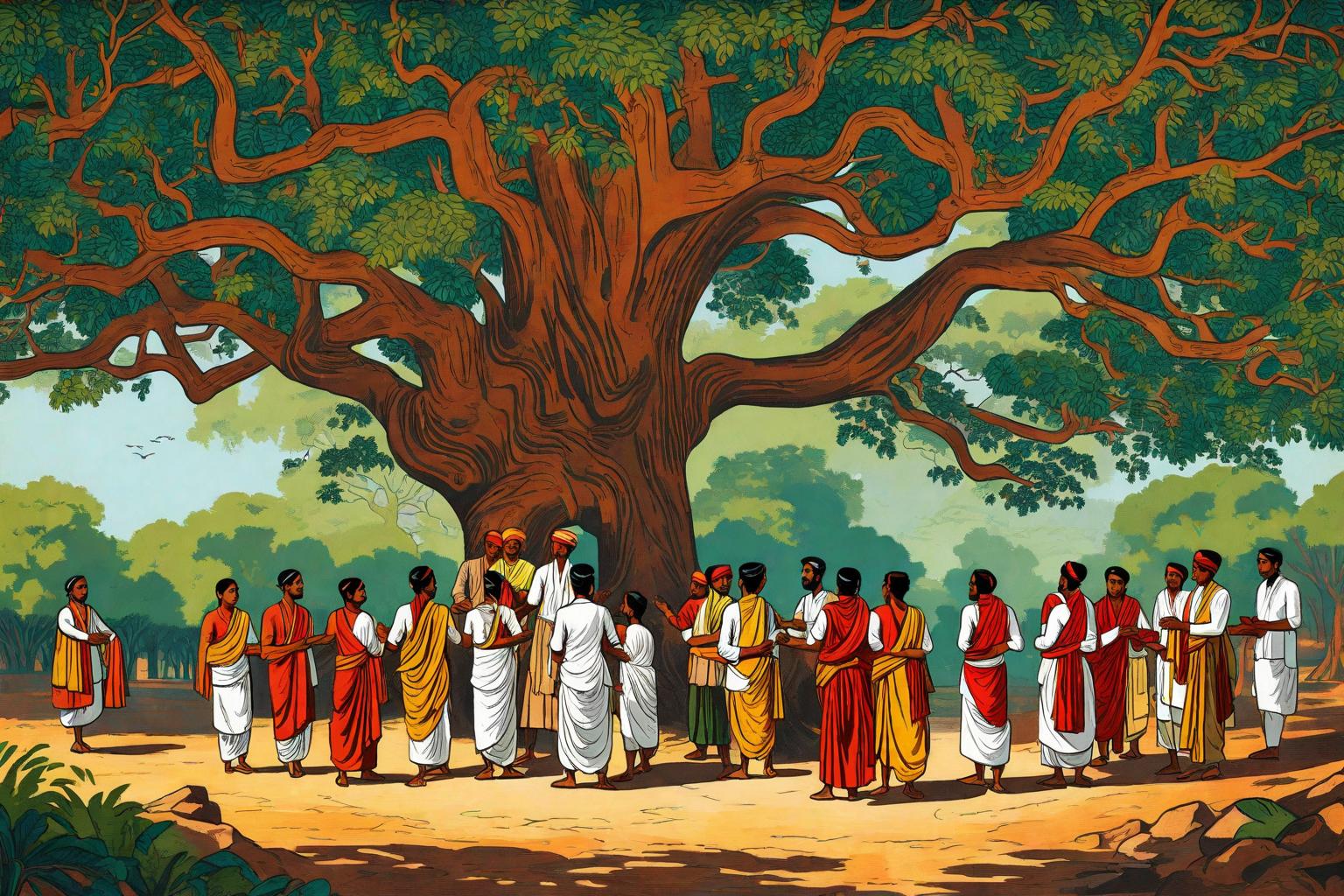Introduction to Peasant Raj
Historical Context
Peasant Raj refers to a period or a system where the rural peasant population plays a significant role in the governance and political landscape. This concept emerged from various historical contexts, where peasants, often marginalized in feudal systems, began asserting their rights and influencing political decisions.
Read this also she ____ in the sun for 1 hour. sitting has been sitting sit has sit: Understanding English Tenses
expository paragraph expounds:Where Ideas Blossom and Knowledge Takes Flight
Key Characteristics
Peasant Raj is characterized by strong grassroots movements, land reforms, and an emphasis on the agrarian community’s needs. It represents a shift from elite-dominated politics to a more inclusive approach.
Decoding “Peasant Raj”: A Deep Dive into Power, Protest, and Politics in Colonial India

The term “peasant raj” is shrouded in layers of historical debate and carries powerful echoes of resistance and upheaval. But what exactly does it mean? In this article, we’ll unravel the complexities of this phrase, exploring its origins, interpretations, and enduring relevance in understanding the intricate relationship between peasants, power, and the British Raj in India.
- Unpacking the Term:
Peasants: Primarily farmers or agricultural laborers, forming a significant portion of India’s population during the Raj.
Raj: The British colonial rule in India lasted from 1858 to 1947.
- A Spectrum of Interpretations:
Empowerment and Autonomy: Some view “peasant raj” as a period of increased peasant influence in local politics and social life, particularly after the passage of the Government of India Act 1935, which increased local representation.
Resistance and Rebellion: Others interpret it as a phase of organized and widespread resistance against colonial policies like land taxes, forced cultivation, and exploitative practices.
Contested Narrative: Historians debate the extent and nature of peasant power, with some questioning the romanticized notion of a unified “peasant raj” and emphasizing the diverse experiences and interests within the peasantry.
- Examining Historical Context:
19th Century Uprisings: Before the Raj, numerous peasant rebellions, like the Indigo Revolt and the Wahabi Movement, showcased collective resistance against existing oppressive structures.
Colonial Agrarian Policies: The Land Revenue Settlements and introduction of cash crops like indigo increased peasants’ burdens, fueling discontent and fostering resistance movements.
Gandhi’s Influence: Mahatma Gandhi’s emphasis on rural development and championing peasant rights further amplified their political voice and aspirations.
- Enduring Relevance:
Understanding Colonial Power Dynamics: The concept of “peasant raj” sheds light on the complex interplay between colonial control, local traditions, and peasant agency in shaping rural India.
Postcolonial Politics: It sparks important discussions about rural development, social justice, and the continued struggles of marginalized communities in contemporary India.
what do you understand by peasant raj?
Peasant Raj refers to the period of British colonial rule in India when the peasants were the dominant class in the rural society. The term is used to describe the peasant rebellion and agrarian society in colonial India.
The book “The Peasant and the Raj” by Eric Stokes is a collection of essays that explore the nature of South Asian agrarian society and examine the extent to which it changed during the period of British rule.
The central focus of the book is directed to peasant agitation and violence and four of the studies look at the agrarian explosion that formed the background to the 1857 Mutiny.
Who were the peasants in India during British rule?
During the British colonial rule in India, peasants were the dominant class in the rural society. They were the backbone of the Indian economy and were responsible for the production of food and other agricultural products.
Peasants were mostly small landowners or tenants who worked on the land they owned or rented from landlords. They were often exploited by the British colonial government and the local landlords who imposed high taxes and rents on them.
Peasant movements were a result of the aggressive British economic policies based on mercantilism. These policies caused the commercialization of agriculture, which altered the mode of production and disrupted traditional agrarian relationships in India.
What were the peasant movements in India?
The Moplahs were Muslim peasants who lived in the Malabar district of present-day Kerala during the British colonial rule in India. They were mostly cultivators of the land and were accorded ownership rights to the lands after the death of Tipu Sultan in 1799 in the Fourth Anglo-Mysore War.
The Moplah Rebellion of 1921 was an armed revolt against the British colonial rule and the upper-caste Hindu landlords in Malabar. The rebellion was led by Variyamkunnath Kunjahammed Haji and was primarily a peasant movement against the colonial government.
During the rebellion, the Moplahs attacked various symbols and institutions of the colonial state, such as telegraph lines, train stations, courts, and post offices. The rebellion saw systematic persecution of Hindus and British officials.
The British colonial government sent troops to quell the rebellion and martial law was imposed in six out of 10 taluks in Malabar. More than one lakh Hindus were displaced during the rebellion.
What was the role of Variyamkunnath Kunjahammed Haji in the Moplah Rebellion?

Variyamkunnath Kunjahammed Haji was a prominent leader of the Moplah Rebellion of 1921, which was an armed revolt against the British colonial rule and the upper-caste Hindu landlords in Malabar.
He was a Muslim peasant who lived in the Malabar district of present-day Kerala during the British colonial rule in India. Haji took the leadership of the Khilafat and was mostly heard all over Calicut and south Malabar.
He ensured that the movement had a secular character as he was aware of the strength of Hindu-Muslim unity and ensured people of other faiths were given adequate security. During the rebellion, the Moplahs attacked various symbols and institutions of the colonial state, such as telegraph lines, train stations, courts, and post offices.
The rebellion saw systematic persecution of Hindus and British officials. The British colonial government sent troops to quell the rebellion and martial law was imposed in six out of 10 taluks in Malabar. More than one lakh Hindus were displaced during the rebellion.
What was the role of Variyamkunnath Kunjahammed Haji in the Moplah Rebellion?
Variyamkunnath Kunjahammed Haji was a prominent leader of the Moplah Rebellion of 1921, which was an armed revolt against the British colonial rule and the upper-caste Hindu landlords in Malabar.
He was a Muslim peasant who lived in the Malabar district of present-day Kerala during the British colonial rule in India . Haji took the leadership of the Khilafat and was mostly heard all over Calicut and south Malabar.
He ensured that the movement had a secular character as he was aware of the strength of Hindu-Muslim unity and ensured people of other faiths were given adequate security.
During the rebellion, the Moplahs attacked various symbols and institutions of the colonial state, such as telegraph lines, train stations, courts, and post offices.
The rebellion saw systematic persecution of Hindus and British officials. The British colonial government sent troops to quell the rebellion and martial law was imposed in six out of 10 taluks in Malabar. More than one lakh Hindus were displaced during the rebellion.
The Emergence of Peasant Raj
Early Movements
The roots of the Peasant Raj can be traced back to early movements where peasants fought for land rights and fair treatment. These movements laid the groundwork for a broader political influence.
Influential Figures
Several historical figures have been pivotal in promoting the ideals of the Peasant Raj. Their contributions have been instrumental in shaping the movement and its principles.
Political Implications
Peasant Raj and Governance
The integration of peasant interests into governance brought significant changes in policy-making and administration, emphasizing agrarian issues and rural development.
Impact on Democracy
Peasant Raj has had a profound impact on democratic processes, making them more inclusive and representative of a broader section of society.
Economic Aspects
Land Reforms and Agriculture
Central to Peasant Raj were land reforms, aimed at redistributing land to benefit the rural poor and enhance agricultural productivity.
Economic Empowerment of Peasants
Beyond land reforms, the Peasant Raj focused on the overall economic empowerment of the peasant class, leading to improved living standards and reduced poverty.
Societal Impact
Cultural Shifts
The rise of the Peasant Raj brought about significant cultural shifts, particularly in rural areas, reflecting changes in societal values and norms.
Education and Awareness
Increased focus on education and awareness among the rural population was another hallmark of the Peasant Raj era, leading to greater political and social consciousness.
Challenges and Criticisms
Contemporary Issues
Despite its successes, Peasant Raj faces contemporary challenges, including sustainability issues and adaptation to modern economic systems.
Counterarguments
There are also criticisms and counterarguments against the Peasant Raj, questioning its efficacy and long-term impact.
Future Outlook
Potential Developments
Looking ahead, the future of Peasant Raj hinges on addressing current challenges while maintaining its core values.
Sustainability and Viability
Sustainability and viability remain key concerns for the continued relevance and success of Peasant Raj principles in modern society.
Conclusion
Peasant Raj represents a significant shift in historical power dynamics, reflecting the empowerment of a previously marginalized segment of society. Its impact on politics, economy, and culture continues to be felt and debated, making it a critical area of study in understanding contemporary societal structures.

